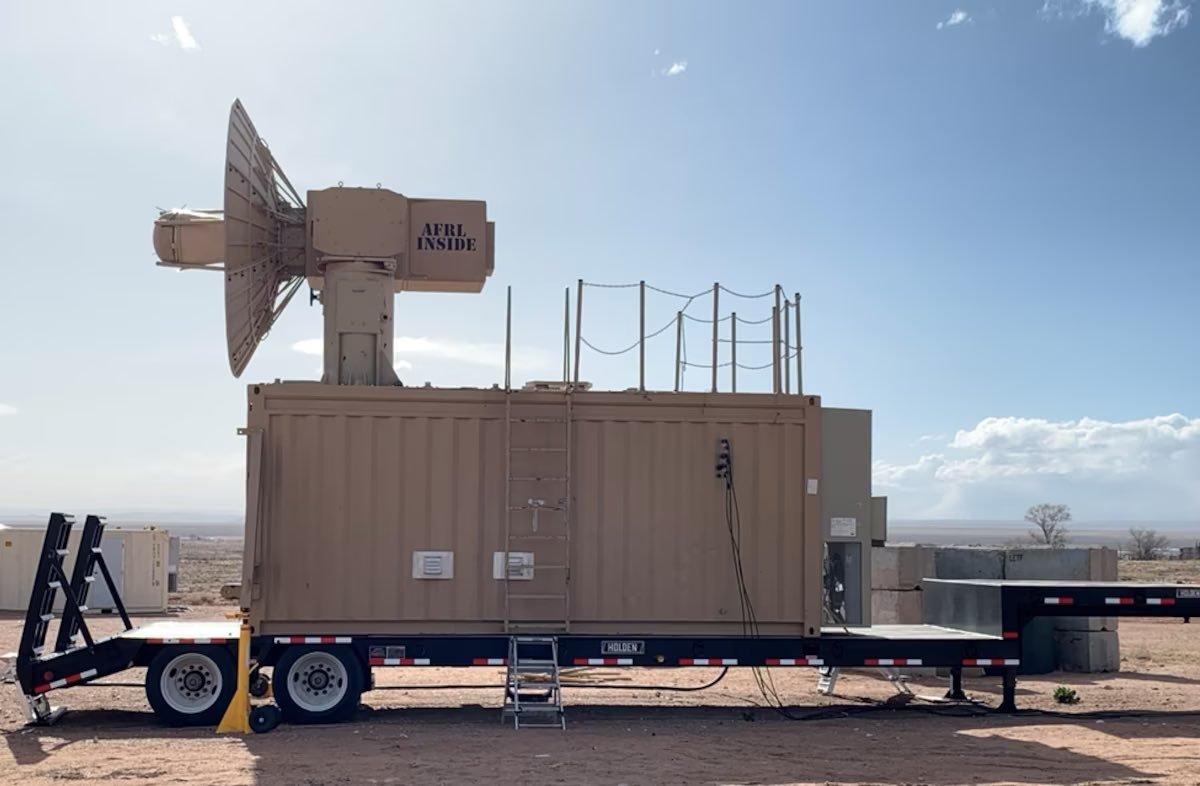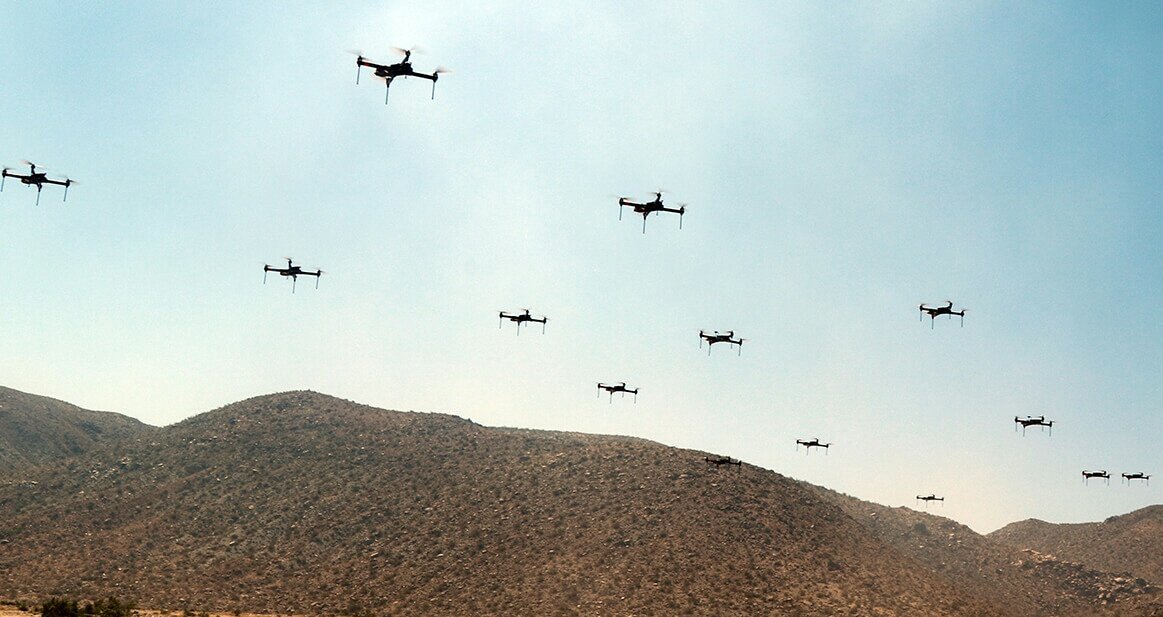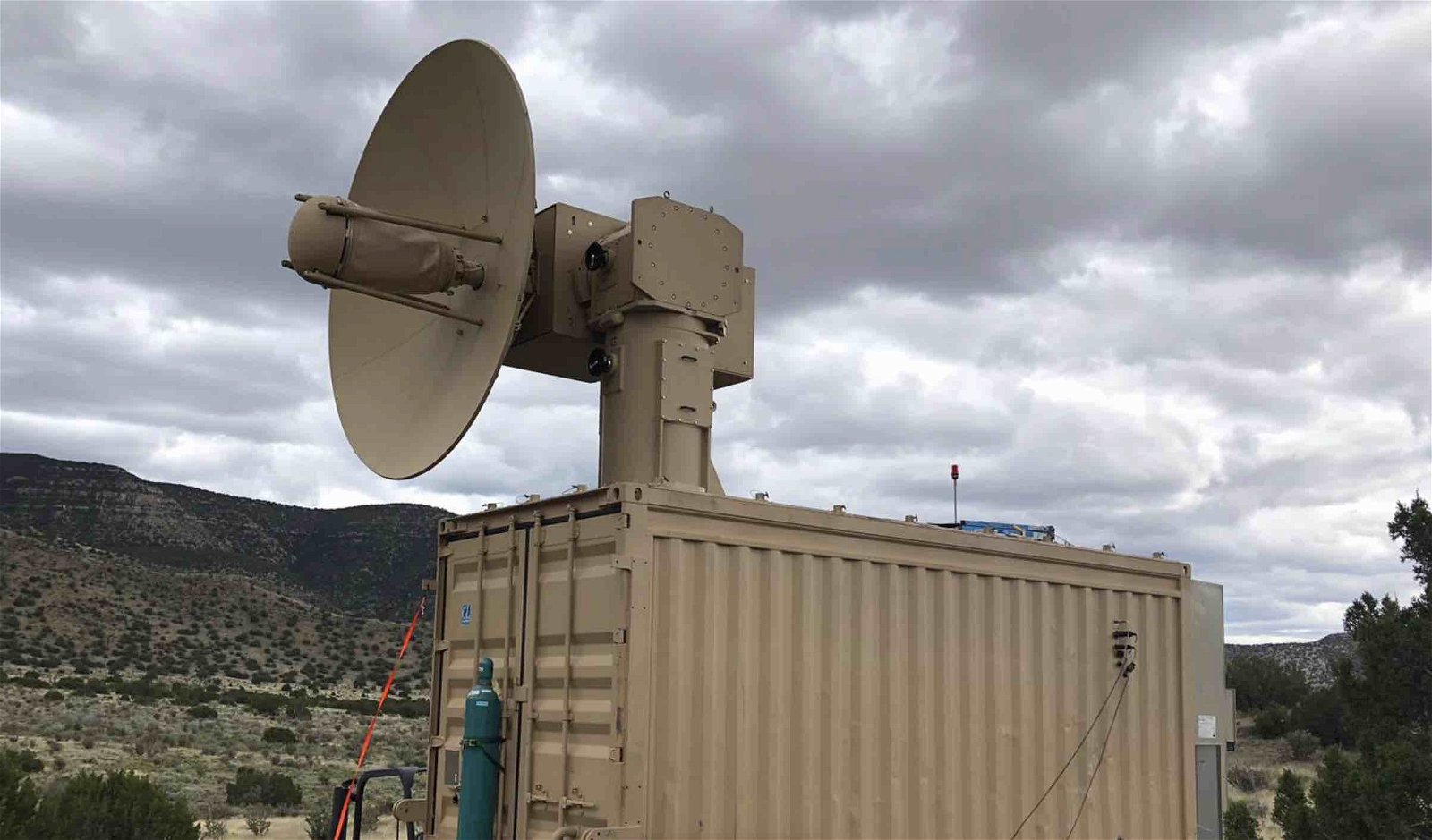A directed energy weapon prototype capable of countering multi-targets that include drone swarms was successfully tested last month, according to a statement issued by the Air Force Research Laboratory (AFRL) this week.
The AFRL said the demonstration of its Tactical High-power Operational Responder (THOR) was conducted on April 5, 2023, at the Chestnut Test Site, located at Kirtland Air Force Base, New Mexico.
A high-power microwave counter-drone weapon, THOR was engineered to be capable of engaging and disabling multiple targets by utilizing a counter-electronic effect whereby a “silent weapon discharges in a nanosecond and the impact is instantaneous.”
During the April demonstration, the AFRL’s THOR unit engineers piloted several drones in a simulation of a combat scenario involving a UAS attack.


“THOR has never been tested against these types of drones before, but this did not stop the system from dropping the targets out of the sky with its non-kinetic, speed-of-light High-Power Microwave… pulses,” said THOR program manager Adrian Lucero.
Lucero and his team operate within the AFRL’s Directed Energy Directorate (DED), which is the USAF’s nexus for the development of directed energy and optical technologies at Kirtland. The DED focuses on the development of technologies that include weapons modeling and simulation, laser technologies, high-power electromagnetics, and directed energy & electro-optics.
Lucero said that THOR demonstrated its capabilities and showed that it was “exceptionally effective at disabling the swarm with its wide beam, high peak powers and fast-moving gimbal to track and disable the targets.”
Concerns over the use of drone swarms by U.S. adversaries have seen increased attention in recent months. Last August, the U.S. Navy released footage related to an incident involving close to half a dozen drones that were observed operating over the USS Zumwalt off the southern California coast in April 2019.
Several similar incidents reportedly occurred throughout 2019, prompting the Department of Defense (DoD) to ramp up its efforts in defending against the potential use of swarms of commercial drones in combat situations.


Citing such dangers, the AFRL said Pentagon leadership is currently “working closely to ensure we are exploring different technologies like directed energy to support the needs of the warfighter in the future against such threats.”
Described as a first-of-its-kind directed energy weapons system, THOR can be completely stowed within a space no greater than a 20-foot transport container, allowing it to be carried easily within a C-130.
After deployment to the battlefield, THOR can be assembled in as little as three hours and boasts a user interface that requires minimal advance training. With a developmental cost of just $15 million, THOR also represents a cost-efficient yet promising new defense system in the U.S. military’s growing arsenal.
Although THOR represents an early prototype in the furtherance of the DoD’s counter-drone technologies, Capt. Tylar Hanson, THOR deputy program manager, said the directed energy weapon prototype had been “extremely efficient” during April’s demonstration, displaying “a near continuous firing of the system during the swarm engagement.”
Hanson said he and his unit “are confident we can take this same technology and make it more effective to protect our personnel around the world.”
Micah Hanks is the Editor-in-Chief and Co-Founder of The Debrief. He can be reached by email at micah@thedebrief.org. Follow his work at micahhanks.com and on Twitter: @MicahHanks.

